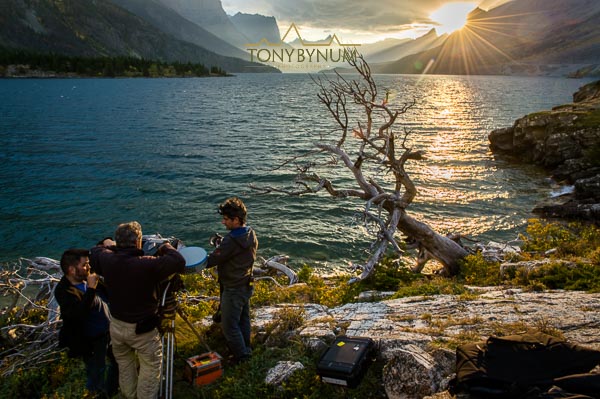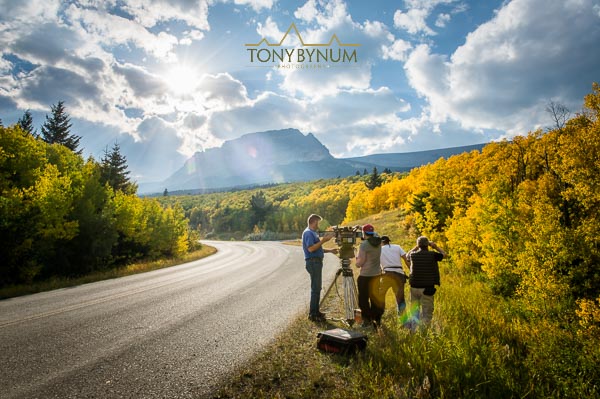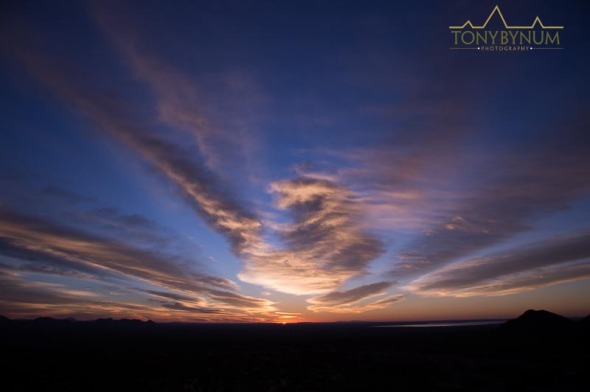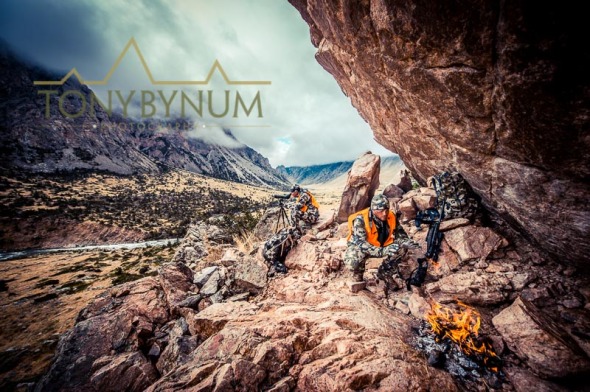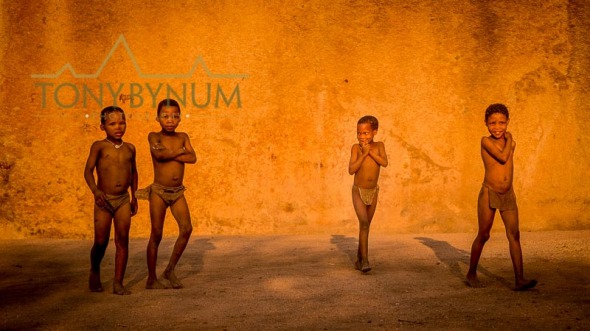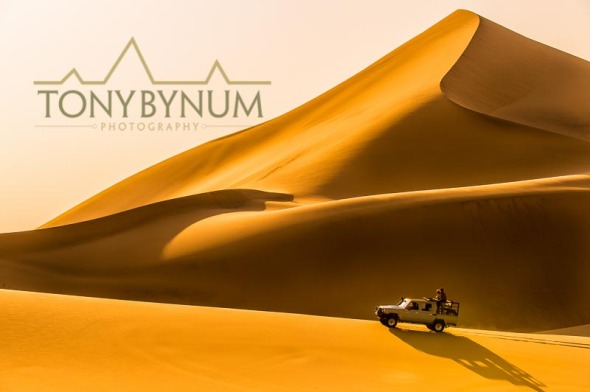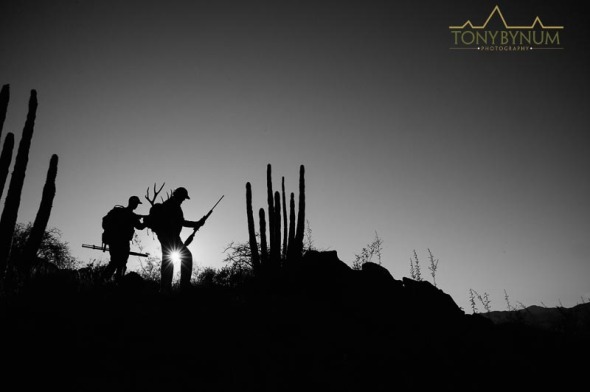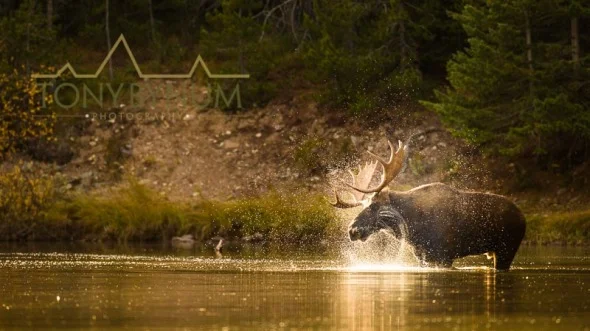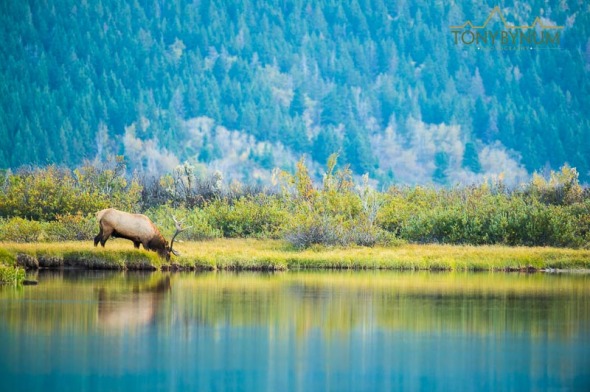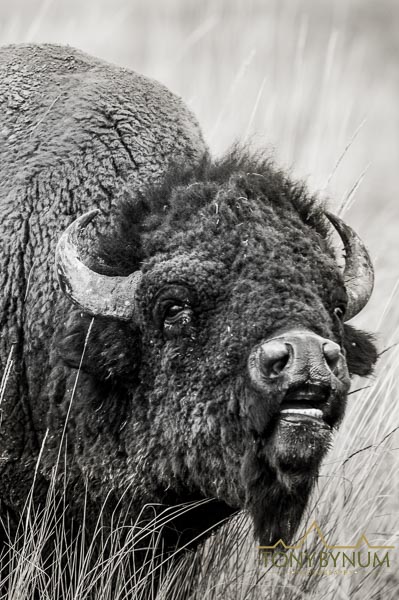Improve your photography - the most important advice I can give you
This single thing will improve your photography the first time out . . .
In this short interview, I tell you the single most important thing you can do to improve your photography. It's so simple and you never hear anyone talk about it. I guarantee if you follow my directions, you'll improve your photography the first time out.
Thank you Ryan Gresham for the interview, Honey Brake and the Professional Outdoor Media Association for the opportunity.
This short interview was filmed during a recent media event we're calling #pomavissionsaffield. The event at Honey Brake was sponsored by the Professional Outdoor Media Association (POMA), Nissan, Honey Brake, Banded, Gunner Kennels, SPG, Browning, Federal Ammunition, Hobie, Voormi, Sure-Shot Game Calls, Vista, Avery, Ducks Unlimited, Confluence Group.
Podcast - Tony Bynum - thoughts on Conservation, Photography, and the Business of Photography
Podcast interview with Montana Based, Outdoor Photographer Tony Bynum, "how Tony approaches his professional photography career - Conservation Photography, Business of Photography, Outdoors, Wildlife
In this podcast, Tony Bynum, Outdoor Photographer, talks with Bruce Hutchens of Whitetail Rendesvous. Tony describes his approach to the Business of Photography, Hunting, and Conservation. Click on the link below to access the Podcast.
Tony Bynum in the photographed in the Canadian Rocky Mountains by © Rod Sinclair - Sinclair Imagery
#OurWild - My Story for Protecting Public Lands
#OURWILD
The #ourwild campaign is about real people telling their public lands stories. This #ourwild video, produced by The Wilderness Society, is part of my public land story. I'm a father. I'm a hunter. I'm a photographer, friend and advocate for keeping the public domain in public hands. I am firmly against selling, or trading the public domain to the states. I'm not a preservationist, I'm a conservationist, which means I believe in using the natural resources, not locking them up. I also believe some places should be off limits to extraction. I'm for sensible, reasoned, and smart use of our public resources.
As a hunter and photographer, I support hunter education in the form of learning the history of conservation in America, in addition to how to be safe with a gun. For example, in order to bow hunt in Montana, during the early elk season, you have to have a special permit and pay an extra fee for it. In order to receive that permit you must go through an approved educational course that includes the history of conservation, the history of bowhunting, and the people who were instrumental in creating of the modern bow.
Conservation and resources management are more important than ever. Resources are limited and as we've seen our appetite, or demand for them is limitless. I believe that all children should be taught the history of conservation.
Conservation and Environmental Reading List
Here is a list of Authors, and titles worth reading.
Aldo Leopold - A Sand County Almanac
Rachel Carson - Silent Spring
Marc Reisner - Cadillac Desert
Henry David Thoreau - Walden
Wendell Berry - The Unsettling of America
James Lovelock - Gaia
Edward Abbey - Desert Solitaire
Vine Deloria - Spirit and Reason
#OURWILD Photographs
Please help by making your story known. You can also take action here, on the #ourwild page. Leave a comment or share this post and together we can insure that our children have #ourwild. #keepitpublic
Tony Bynum
Glacier National Park Storm Cell
Glacier National Park Storm Cell, August 29, 2016 Blackfeet Indian Reservation, Montana
Photographs of a Glacier National Park storm cell. There's not much to say, that the pictures don't already describe, other than to add, it was cool to watch this storm develop and move across the front of Glacier National Park. I just wanted to share these photographs of the storm cell in Glacier National Park, Montana - It's a simple post with not much more that a few pretty pictures and some description of the equipment and a short explanation of my camera settings. These images of the storm cell over Glacier National Park, were taken from the Blackfeet Indian Reservation.
The first photos is of the storm cell developing and letting go of it's moisture. The following images are the cell developing, beginning to collapse and then moving though the area dropping heavy rain and creating high winds. I'd say the winds locally were 50 miles per hour as the storm moved though. I eventually had to quit shooting because the wind and rain became unbearable. What's interesting about these photographs of the Glacier National Park storm cell, is how uncommon and rare it is to see this kind of cell develop, almost out of know where, over the mountains, and this late in the season. We see them more often on the prairie.
All of the Glacier National Park storm cell photographs were taken with a Nikon D810, Nikon 17-35 f2.8 lens (Because I left my 14-24 in another Pelican case back home), mounted atop a Really Right Stuff tripod / ball head combination with a bag of rocks hanging from the center support. The shooting data indicates that I was all over the place with my settings and for good reason, because I was. I created these images at various ISO's from 31 (yes iso 31, the D810 goes that low) to 400 with shutter speeds ranging from a fraction of a second to up to 10 seconds and apertures from 3.2 to f22. What you cant really see in these Glacier National Park storm cell photographs is the lighting. There was lighting in the clouds, which is why there are lighter spots in the clouds. But what I did not capture were any of the lighting bolts. . . Unfortunately, my lighting trigger failed to pick up on the strikes (on the bright side, I got home and fiddled with it and got it working again, so now I'm ready for the next storm - which means the lightning storms are over for the year. . . Ha, Ha, Ha.
Happy Shooting! Tony Bynum
"National Parks Adventure" filming on location in Glacier Park, Montana - what it was like
"National Parks Adventure" filming on location in Glacier National Park - what it was like. Packing a million dollar camera down a rough trail, by hand, in the middle of darkness for a one minute movie clip may seem extreme. Maybe so, but this shoot was for the just released, IMAX film, "National Parks Adventure." MacGillivray Freeman Films produced the film to celebrate the 100th anniversary of the National Park Service.
imax film crew filming in glacier national park, montana national parks adventure
Our caravan arrived and parked on the gravel, next to a wide opening in the forest that led to a narrow trailhead. It was well before sunup, and unfamiliar territory for the group made worse by the ongoing construction to rebuild the Going to the Sun Road. Car doors opened and the dim warm glow of dome lights provided some illumination. Everyone knew their job, they were prepared. Immediately upon exiting, bright headlamps shined around in the sky. Beams of light showed up on trees and bounced of mirrors and vehicles like jousting light sabers. After everyone had organized their gear, I led the guys down a short trail to where they would set up a very rare, IMAX film camera (one of only three like this one in the world). We were filming the infamous, "Wild Goose Island" sunrise scene over Saint Mary Lake - likely one of the most iconic national parks scenes in America.
Still in the dark, I showed Brad Ohlund, Director of Photography, the exact locations where I thought the scene would best be captured. I've been here to shoot this image 100 times, so I had the best spots surveyed out well before we ever arrived. As a side note, early on in our planning, I had made sure to discuss the camera's field of view so I could replicate it on my own camera. I wanted to be able to see exactly what the IMAX camera would see. After Brad surveyed the sites, he directed his camera crew to set up the massive camera and tripod in the exact location he thought he could best capture the sunrise scene. Brad, as the director of photography, is responsible for everything that happens on the "set." Brad's been at this for over 25 years. He was on the team that took the the IMAX camera to Mt. Everest to film the movie, "Everest." That same year, a deadly disaster took the lives of 8 people. Brad was present when Rob Hall, and Everest expedition leader passed away from injuries suffered during the avalanche.
(Side Note - Brad Ohlund, recently published his version of the Rob Hall mountain climbing disaster on Everest.)
glacier national park, imax behind the scenes wild goose island "national parks adventure"
As the sky began to brighten, Brad, working with his team, checked the light with a portable light meter, set the aperture, and focused the camera, he was ready to roll. Everyone anticipates the camera rolling. It's drama of a different sort. The camera is at the center of focus so to speak, as we wait for the light to arrive. Soon, Brad starts the camera. It clatters away, film reeling from one canister though the camera, to the canister on the opposite side. As I listened to it clicking away, everyone intensively watching the camera, then snapping my neck around to catch a glimpse of the scene, then back to the camera again, I couldn't help but think of the bygone era of mechanical film cameras. It was a nostalgic moment for me. The truth is, the detail captured by the film in this camera is still the gold standard for mega screen IMAX movies. Digital IMAX and 3d would be used to film parts of the movie "National Parks Adventure," but the film camera, for these scenes produced the best results.
After the Wild Goose Island shoot, we packed up and soon were on to a new location. We managed two to three locations per day. For each day we planned a morning, and an evening shoot. Morning and evening offer the best light - you've all heard of the golden hour, well, that's when we had to be ready to shoot, come hell or high water. For our second location, the evening shoot, we changed location. We moved to another part of Saint Mary Lake. The image below is what it looked like as we waited for that golden moment. Understanding the local weather patterns was critical to this shot. I anticipated that the light would improve as it peeked through, and below the clouds, as it often does as the clouds build over the lake during the late summer and early fall. Below, is the dull, cloudy image showing why we were forced to wait. The rest of the crew knew that something magical could happen, but they, like me, were nervous that it may not. As luck would have it, the sun broke though, as predicted, and what a scene it was. It was, by anyone's standards, worth the wait. As the sun peeked though, I'm sure we all heard the same whimsical music in our heads - it was absolutely heavenly.
saint mary lake
photograph of filming imax movie national parks adventure in glacier national park
imax film crew filming national parks adventure imax movie in glacier national park
photograph of sunset over saint mary lake, glacier national park, montana
The following day lead us to the shore of another lake, Lake Mcdonald, in Glacier Park's west side. The lake is near the Park entrance at West Glacier, Montana. In these images the camera was set up at the water's edge to put the end viewer front and center. Motion in IMAX film helps keep the viewers attention as many of the shot sequences are on screen for a minute, and sometimes more! That's a long time for any scene to stay on screen. It's possible to leave one scene on the screen for that long because of the immense size of the screen and the extreme detail captured with this camera. It gives people time to look around and really take in the entire experience brought to you by an IMAX theater.
Brad Ohlund, Director of Photography, filming the "National Parks Adventure" movie along the shore of Lake Mcdonald, glacier national park, montana. © Tony Bynum
Behind the scenes photograph of filming the imax movie "National
The next stop was along the Going to the Sun Road, just inside the Park's eastern entrance at Saint Mary's, Montana, a small town on the Blackfeet Indian Reservation and boarding Park.
Behind the scenes photograph of "National Parks Adventure" movie crew setting up to film along the going to the sun road in glacier National Park, Montana.
After this shoot, we planned to reshoot the Saint Mary Lake, Wild Goose Island location the next day. Unfortunately, when we arrived the wind's were typical for Glacier Park, blowing and spitting rain, not the best conditions for filming. We waited around for the wind to die down, but it never did. We regrouped and the team packed up and headed off to their next destination, Devils Tower in Wyoming to film Conrad Anker climbing the Tower. All in all, it was a fantastic shoot, and I'm happy to have been a small part of this historic documentary film.
Location Expert - How I got the Job and Pre Production
For me, the entire project started about a year before the shoot. MacGillivray Freeman Films called me to discuss the details of filming locations within Glacier National Park. They wanted the epic, grand views, the ones most of you have likely seen in photographs. I pulled together a set of digital maps, with photo points linked to photographs I've shot over the past 15 years, and sent them on to MacGillivray. Creating maps with key photo points linked to photographs allowed the team to share the critical planning elements among each other, without having to have everyone in the same room. They could simply bring up the maps, click on photo points, and reference the images of that location on their smart phones, tablets, or computers.
After a few weeks looking over locations, and discussing the types of scenes the director was looking for, they hired me as the location expert and I become part of the team. As the location expert, it was my job know everything there is to know about the place. From how to get around in a timely manner, to knowing where the light's will be and when it's going to be right. One of the most most critical parts, is knowing what to do when plan A does not go as planned. The camera man has the ultimate say on the shot. It was my job to show the camera man the locations that I thought were best for the shoot, and discuss all the variable of each location in order for him to be able to make a wise choice about capturing it on film.
The IMAX Camera
IMAX film cameras shoot a maximum of 3 minutes of 77mm film. That's right, it still uses real film. Typically a rolling film shoot in the IMAX camera lasts from one to three minutes, one minute being the minimum. The camera holds three minutes of film, and a full film canister weighs 50 pounds. It takes about a hour and a crew of 3-5 people to set up the camera to shoot one to three minutes of film. If the film runs out, a new, full film canister and an empty receiving can is swapped out. The canisters are pre loaded and stored in a truck near the shoot location.
The entire camera package is bulky, heavy, and cumbersome to move. Getting the camera and support gear into remote areas is a major, time consuming and very labor intensive endeavor. An interesting fact about filming in IMAX format is that it cost about $1000 per minute to run the camera. $1,000 dollars a minute! Of course you'd be captivated, anyone would be, by a camera that can spend more money in one minute than your entire day's wage!
National Parks Adventure IMAX Movie Trailer
Here's is the 2 minute trailer to the film, "National Parks Adventure."
https://www.youtube.com/watch?v=0iqF2Tk_1WA
Finally, I'd like to thank MacGillivray Freeman Films, Brad, and Rob, and the rest of the crew for putting up with my humor and for trusting me to provide them the very best, most trusted and knowledgeable service possible. To the National Park Service, Glacier National Park, for providing us with a fantastic park service monitors, all were helpful, polite, and did their jobs well!
"National Parks Adventure" movie crew above Saint Mary Lake, Glacier National Park, Montana.
I encourage all of you to go watch, "National Parks Adventure" in an IMAX theater.
If you can please leave a comment, or ask any questions, I'd be happy to share additional thoughts or answer questions.
Sincerely, Tony Bynum
Micro four thirds and 4k video - is it time to switch?
I've mentioned micro four thirds, aka "mirrorless," in previous posts. As fast and as far as technology has taken imagery, there still are trade-offs no matter the type of photography you choose. 35mm digital single lens reflex cameras (DSLR), along with crop sensor DSLR's are used by most outdoor photographers due to their size, availability, quality construction, quality lenses, and finally, price. I guess one could say, DSLR's today occupy the space on a graph where price and quality meet. Of course there are better cameras with bigger sensors that offer better results, but for most, me included, they are not important to my workflow.
Outdoor sports and adventure photographers, wildlife photographers, and journalists are always looking for smaller, lighter, faster tools, while maintaining a minimal level image and product quality. That minimum level for image quality is today still largely based on the demands of magazine publications i.e., print. So, while I don't like to think I'm compromising on quality, I must in order to get my gear where I need to go - as mentioned, it's a balance between size and quality output. I use full frame Nikon cameras, and large aperture lenses when I'd prefer to use a 50 mega pixel back on a medium format camera resulting in even better files, but that's just not realistic for me, after all I'm a photographer first because I enjoy it!
Micro four thirds cameras offer that smaller size equivalent to DSLR's. But the image quality is still not there for print. I have not found a regular place in my professional photographic workflow (although I do own and use a Nikon AW-1 - a small, interchangeable lens camera - but that's for very specific purposes). The Nikon AW-1 while not a micro four thirds camera is a micro, mirrorless, interchangeable camera that fills a similar niche. The Nikon AW-1 is actually an eight to three ratio and not four thirds. I will go into more detail about this camera in a future post, but for now I'll get back to micro four thirds.
I've spent dozens of hours using the Panasonic Gh 3 and a good selection of prime as well as zoom lenses. For video, I doubt you can find a better set up, for the price, than the new Gh4. But for stills, mainly because I shoot a lot of low iso in low light, the micro four thirds, like the Gh3 still don't produce the quality of files I need for still photography.
I've heard people like Dan Cox say that micro four thirds are good enough for his work and I know there are other's that would agree. Just take a look at Dan's camera bag and read his blog posts about micro four thirds. I love the photo of his camera bag, makes me get scared of photography. In fairness, I like Dan, we are friends, so I'm not ripping on him, I'm pointing out that he's a fantastic, successful photographer and use's four thirds systems. Here's the link to Dan's blog.
Simply put, imagine if you need the quality of a full size DSLR with wide aperture lenses and yet you have the occasion to use a smaller, lighter micro four thirds camera. If size and portability are part of the equation, packing two systems does not make any more sense than leaving the DSLR at home altogether. So, I'm not sure how it helps anyone in my business to support four thirds when it's only marginally useful and if you do any amount of travel, it's nearly useless to try to stuff both systems (or more) into your carry-on. . . If you have a different view, or a real solution to this dilemma please share your thoughts by commenting below, we all would love to hear them.
On January 10, 2015, I'm not ready to change over to micro four thirds as my primary, commercial photography tool. It's not time for me to switch, but it is time to take notice and work one into to my photography business more completely.
If you are interested in learning more about 4k video, and micro four thirds photography, the following video does a great job of showing the benefits of 4k and the weight and ergonomics of micro four thirds. If you're a photographer and have been considering some video work, this video may help you make the move to owning at least one small micro four thirds camera system. 4k might well be the intersection of quality and price when it comes to high quality video. I suggest you take a closer look.
Thank you for taking the time to visit my blog. If you're on social media, lets continue the learning and the discussion - twitter: @tonybynum, Instagram: @huntphotos, and Facebook: @Tony Bynum Photography
The Ansel Adams Act- "to restore the first amendment rights of photographers"
The Ansel Adams Act of 2015. H. R. 5893. To restore the First Amendment Rights of Photographers.

Man photographing Glacier National Park winter scene. The Ansel Adams Act would return restore first amendment rights to photographers on public lands. ©tonybynum.com
Exert from the bill:
"Prohibition on Fees, Permits, or Insurance.--No Federal
Government agency shall require fees, permits or insurance as a
condition to take still or moving images on Federal lands, National
Parks and Forests, and public spaces, whether for private, media, or
commercial use.
(d) Prohibition on the Seizure and Forfeiture of Photographic
Equipment.--Federal law enforcement officers or private contractors
shall not seize any photographic equipment or their contents or memory
cards or film, and shall not order a photographer to erase the contents
of a camera or memory card or film"
As a photographer this interests me a great deal. Years ago I tried to make the argument that the Professional Outdoor Media Association ( the only national traditional outdoor media organization, and I honorably and proudly serve as an executive member of the Board of Directors), should push the first amendment rights of photographers when our "rights" are infringed. Much like the National Rifle Association pushes the constitution rights of Americans to own guns. I was denied support in exchange for my support of a bill that would require photographers and videographers to pay a yearly fee for access to our public lands for filming and photography. That bill never became law, although Murkoski of Alaska introduced the bill and Montana's senator John Tester worked hard crafting it.
Today, there's a new bill that shall be referred to as the, "Ansel Adams Act." Its purpose is to return first amendment, constitutionally based rights back to photographers. While the bill does not address video and it will have to define the word "photography" so there's no confusion, it's a step in the right direction. Technology is changing everything and unless our laws keep up with the changing world, we will continue to lose rights, and congress will continue to build it's power over us in exchange for big money from special interests.
I would like the bill to go a step further and add some language about video and the number of people that can be grouped together. In the past, regulations have applied to two or more people leaving being outdoors collecting digital media to the pursuits of a single person acting alone.
If you would like to read the short bill, you'll find the bill, the "Ansel Adams Act," at this address.
I recommend you contact your house and senate members and refer them to the Ansel Adams Act by showing that you support this bill. Share the bill broadly via social media, and if you have the time and capacity, write about it on your own blog.
How do you feel about this bill? Does it make sense, would you support it?
Tony
2014 - What Makes a Great Outdoor Photography Year?
2014 is history. It's been a great outdoor photography year - I'm blessed. What makes a great outdoor photography year? To start, both myself and my family all are happy and healthy. Beyond that, the rest was about the experience of the adventure and living life to it's fullest. In brief, here are a few exerts from the past year's adventures, followed by a few photographs and at the end of the blog, a list of 10 things I learned this year.
200,000 individual moments of time were turned into digital data from adventures across the globe; I witnessed extraordinary wildlife action in extraordinary places.
Wore out a couple of Nikon cameras; broke more than $5000 worth of gear - some completely and beyond repair;
I used the third string lens to complete a commercial shoot; trashed a half dozen pair of pants and blew the crotch completely out of one;
left some of my own clothes with people on other continents who would appreciate them more than I would;
sent a 50 inch canvas print of a man and his wife to him weeks after she suddenly passed away - I'm grateful I was there to capture the moments before her passing;
I tossed in the trash three pairs of boots because they were done being useful; logged more than 50,000 air miles and I have no idea how many on my pickup;
pulled thorns out of my legs and ass on two continents;
swam naked across an Alaskan glacial river in the dark with just a headlamp while the gear and guns were left behind;
slept overnight, outside, in a wet down sleeping bag - twice; stood in front of a young man holding an AR-15 . . . for 20 minutes - we did not speak the same language - that was interesting;
I get to live in a place where for at least half the year I can keep ice-cream outside without it melting; watched our kids play violin, and sing during and after school programs; shoveled snow; stacked fire wood;
witnessed the sun come up more than 250 times; and, I'm busy, I can't remember a moment when I did not have something enjoyable and fun to do.
I love my life! Here are more outdoor photographs from 2014:
After all of that, I'd like to share a few things I learned -
1. Stay focused on the goals.
2. Pay attention to details - every singe one!
3. Clean your sensor - often!
4. Have two but preferably three back up plans.
5. Things will go wrong - again.
6. There's time for work, and there's time for play - don't confuse them and don't get too distracted by either one.
8. Most of all, it's a lot better to be happy than it is to be right . . .
9. Success is a team effort, you can't make it alone. . .
10. If you're not making mistakes, you're doing something else very wrong!
If you've gotten this far, thank you. What photographs or adventures do you remember from 2014 and do you have any advise of your own for 2015?
Here's to a happy new year 2015!
Tony Bynum












